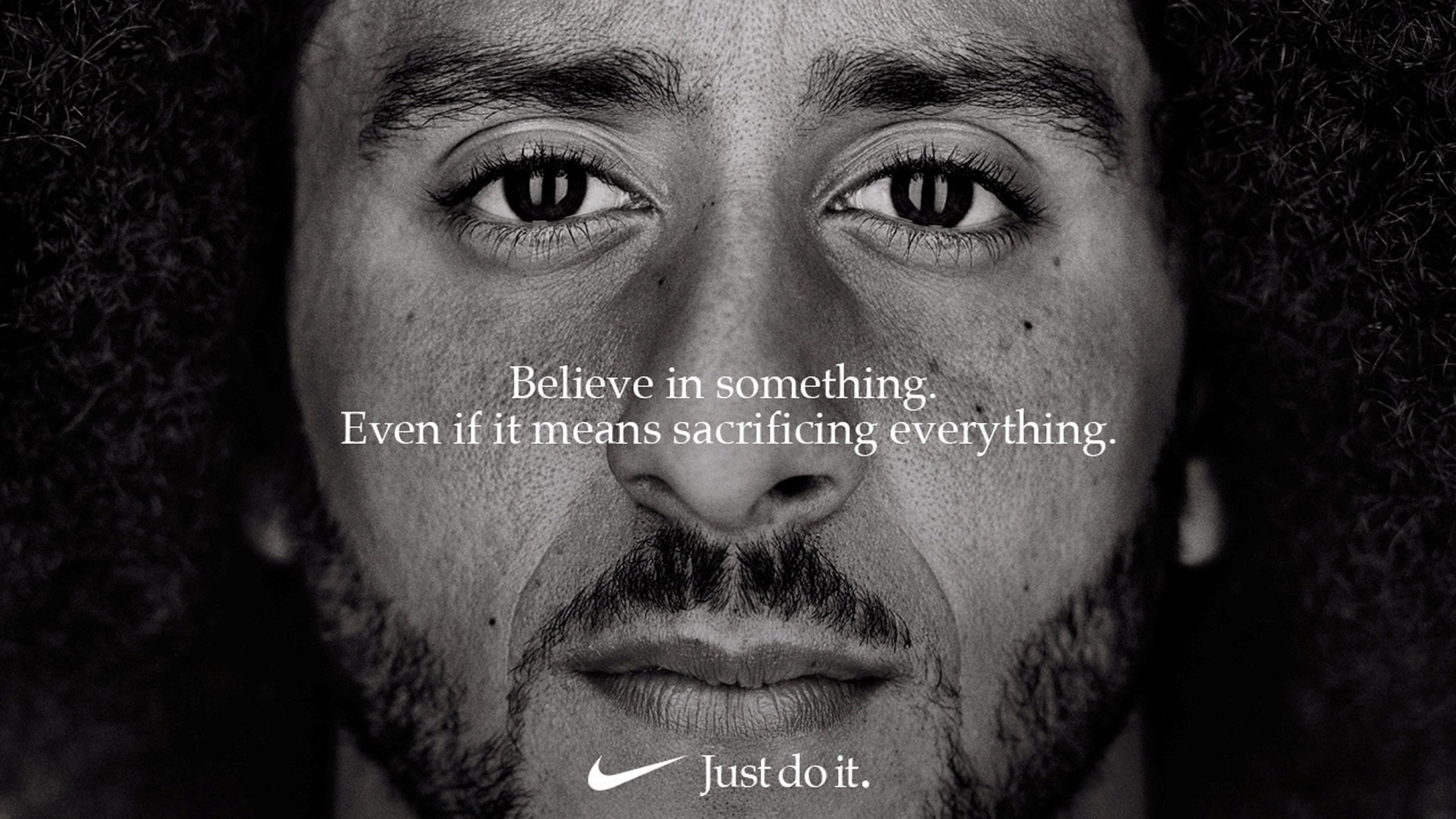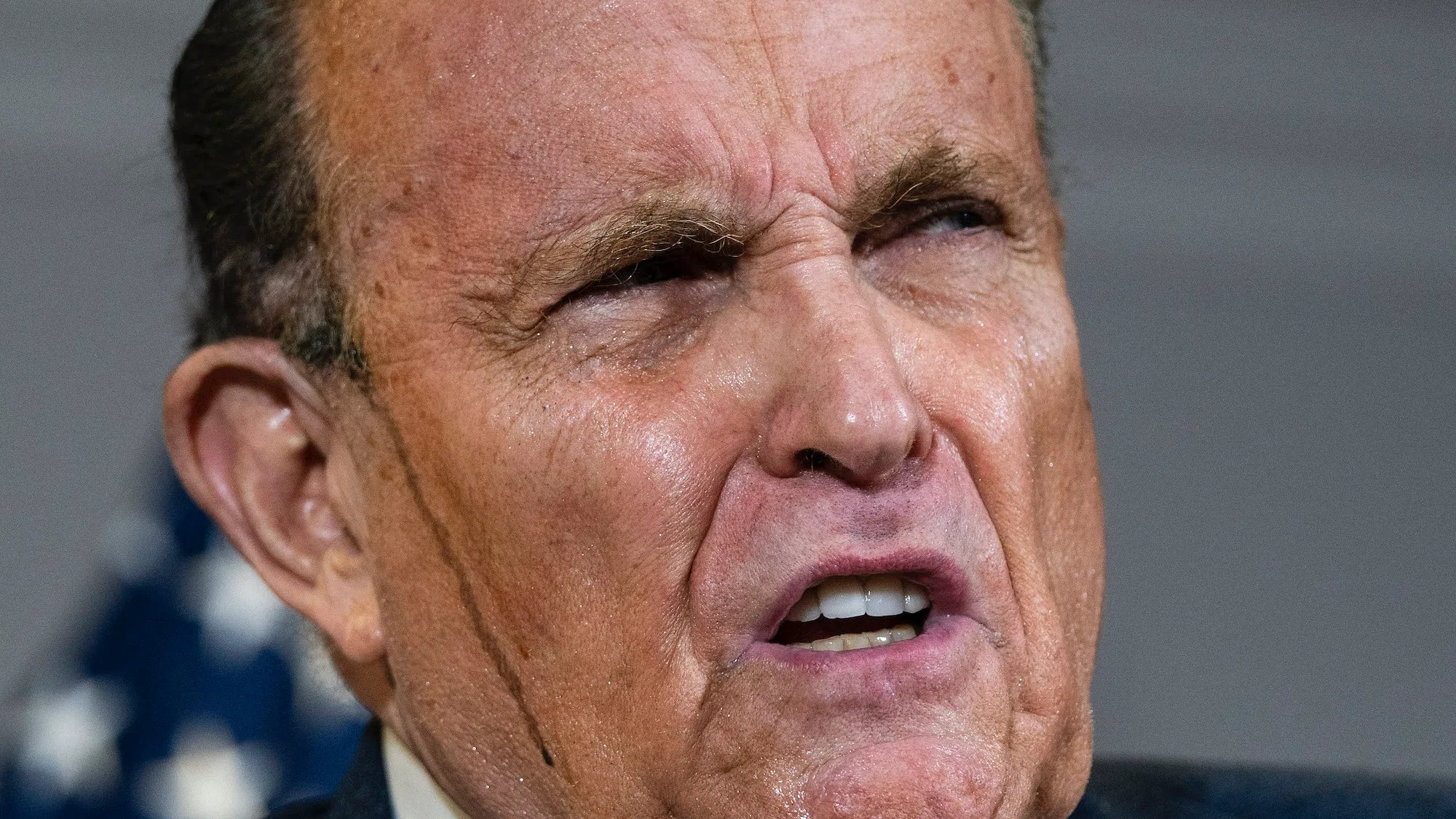What Colin Kaepernick Taught Me About Advertising
About purpose, a four-year-old ad & why it’s still relevant
Why doesn’t he go to another country? Go take a knee someplace else?
That was the reaction of former NYC mayor, suspended attorney, and now full-time troll Rudy Giuliani when Eminem “took a knee” during Super Bowl LVI.
The rapper finished his act by kneeling in front of the crowd, mirroring Colin Kapernick and the athletes who in 2016 protested police violence against African Americans by sitting down during the national anthem.
And oh boy, did Giuliani not like it.
Why Write About An Old Ad?
Giuliani reminded me that Nike’s “Dream Crazy” campaign is often misunderstood — even now among ad-people still discussing the pros and cons of purpose marketing.
And I reeeally like Dream Crazy! It’s a masterclass in copywriting and creativity.
So here’s the background and the brilliance of Nike’s collaboration with Kaepernick, plus three takeaways to make purpose be more than a dying buzzword in 2022.
A Brief Background
In 2016, Colin Kaepernick became the first NFL player to support Black Lives Matter and oppose systemic racism by kneeling in silent protest.
More than 200 players followed suit but Kaepernick became the face of the protest. It made him the enemy of right-wingers, racists, and those who didn’t want their privileged Sunday spoiled by reminders of conflict or inequality.
Of course Donald Trump and the whole MAGA crowd used it to fuel their narrative — which made the 32 billionaires who control the NFL get scared.
The following season Kaepernick lost his job and suddenly no NFL team needed a world-class athlete with a Super Bowl appearance on their resume.
Kaepernick’s career was effectively over.
Officially, the NFL had nothing to do with Kaepernick’s sudden downfall.
Words like “blackballing” and “collusion” were tossed around in sports media but the NFL denied everything.
Of course, it was noteworthy when they made rules against kneeling in May 2018, got praised by Trump for it, and then did a complete 180 when police violence against minorities once more drew international attention.
PR disasters are never far between in the National Football League — from suppressing scientific research about brain injuries to covering up spousal abuse — but this time it went public in a big way.
Maybe it was the stark contrast that made Nike’s “Dream Crazy” work so well.
On one side: A monopolistic league blackballing an outspoken star and catering to 32 white team owners.
On the other: Nike using creativity to align brand values with current events on the right side of history.
The ad went viral, Nike’s stock went up, and NFL has since apologized and settled out of court with Kaepernick.
Kaepernick became a victim of the very oppression he protested — which turned him from a symbol into a martyr.
Nike became proof that brands can amplify a message without getting their own agenda in the way.
And people like Giuliani still get upset about it because it’s a reminder of where the world is turning.
Purpose, Schmurpose
Around 2011, “authenticity” was replaced by “purpose” as the hottest buzzword in marketing.
Some people say it was because Jim Stengel wrote “Grow: How Ideals Power Growth and Profit at the World’s 50 Greatest Companies”.
Personally, I suspect it was because consumers got sick of hearing about authenticity and finally said: “You’re authentic? Fine. Prove it”.
Now brands needed a reason for existing (other than making money) and advertising became about what benefits the world rather than the individual consumer.
These days, both advertisers and consumers have more lukewarm feelings on the matter.
To advertisers, tangible messages about price reduction and availability yield more immediate results and are easier to measure. Sure, purpose boosts image and long-term growth — but if your main metrics are sales-centric, so are your main concerns.
For actual human beings, the problem might just be the sore fact that most purpose campaigns are godawful.
They add noise to important debates without adding value.
Like when Pepsi figured that a Kardashian, a cola, and a big film could stop police violence and not be perceived as absolutely delusional virtue signaling.
Pepsi jumped on a bandwagon instead of putting weight behind it. As a result, they made one of the most criticized and cringe-worthy commercials ever.
“Show, don’t tell” counts double in purpose. A big brand saying that violence is bad and peace is good means nothing to no one.
Either spend your resources doing good — or show why what you’re already doing is better than anyone could imagine.
Nike did the latter. And in the earned arena where all successful purpose marketing is found.
In the airtight truth about the brand combined with a creative twist that allowed people to think differently about something they already knew.
In the connection between belief and sacrifice.
Kaepernick & Nike
Colin Kapernick was the son of a single teenage mother who gave him up for adoption at birth.
Though he had a different childhood than most, he shared a crazy dream with children all over America: To play for his favorite NFL team.
And so he did.
In 2012, Kaepernick became the starting quarterback for the San Fransisco 49ers and lead them to the Super Bowl.
Even before kneeling in the face of oppression, he was a symbol of dreaming big and achieving the goal.
As such, it is no surprise that Kapernick signed an endorsement deal with Nike all the way back in 2012.
Which in 2018 made it harder to criticize the commercial for being opportunistic — Kaepernick had been a Nike athlete for years.
Why Dream Crazy Is Insanely Good
Nike’s brand word is bold.
It is about daring and doing, going against the odds, and achieving goals.
Their famous slogan isn’t “Just Be Careful”.
That being said, not a single element in the ad is daring too much or trying too hard.
The copy is very much in Nike’s tone and speaks only about classic Nike values.
Every word is on-brand and not one ventures into politics. With a different athlete, you would have a totally fine albeit slightly boring Nike commercial.
Okay, a different athlete might make that one “controversial” sentence fall a little flat:
Believe in something. Even if it means sacrificing everything.
Because hey! That was what Kaepernick did!
But it is not a political statement. It is not a leftist, pandering, virtue signaling claim at all.
If anything, it’s about the strong individual. A Charles Bronson-like character who stands up to a corrupt system, in essence a libertarian archetype. The cop who ignores orders to chase down the bad guy because he knows what’s right for ‘Murica.
Heck, if you replace Kaepernick with Oscar Pistorious (the Paralympic athlete who shot his girlfriend to death), you get a murderer with no legs morbidly suggesting that you kill your spouse because you’ve gotten famous and want to f**k someone else.
Not so PC now, is it?
That was what made the Trump camp so angry:
The Nike narrative of strength and willpower + the all-American message of faith and sacrifice were values they shared. And now they were reminded that Kaepernick’s story was the manifestation of it all.
The only controversial thing about the ad was Kaepernick himself — who had been a Nike athlete for half a decade.
On the other side of the aisle, armchair intellectuals and leftwing critics like myself could argue that Nike used sweatshops and weren’t good guys at all.
But the copy never claimed anything like it.
It spoke about all the usual Nike stuff. Only it was told by Kaepernick.
I couldn’t find a single word that was even remotely off-brand — and neither could Fox News and the outraged right-wing.
That’s why it’s brilliant.
While Pepsi was an intruder in an important debate where soda had nothing to do, Nike just talked about Nike values — and used creativity to show why they mean more than you thought.
3 Things To Just Do
58% of millennials believe that businesses have a bigger impact on the world than governments.
Evolutionary psychology tells us that humans are emotionally incapable of distinguishing an economic from a living organism: Even though we rationally know the brand persona is a construct, we emotionally expect the business to act like a healthy organism with a coherent set of values.
While the efficiency of purpose campaigns might not be easy to measure, brands are still expected to be about more than just making profits from selling sneakers.
Brand purpose is never easy but it’s here to stay.
And there’s a fine line between showing earned purpose and talking bullsh*t about CSR.
Maybe that’s why many purpose campaigns fail. Not because consumers prefer advertising about cost savings or product benefits — but because humans are sick of brands intruding on subjects where they haven’t earned their place.
If you don’t want to trespass and get caught in bad publicity, here are three takeaways from Dream Crazy:
1: Find your purpose in an earned arena. Nike told a well-known brand story through an existing partner whose current situation made the message more meaningful. When Gillette opposed violence against women and rewrote their old slogan to “The Best A Man Can Be”, it backfired because nothing in their history suggested they had ever given two sh*ts about female consumers.
2: Show courage and sacrifice. Every purpose campaign needs a form of sacrifice. Being good means doing good. When Dream Crazy first aired, Nike’s stock dropped. Their courage to stand by the message was perceived as sacrifice and both consumers and celebrities rallied around it. Gillette abandoned their message almost immediately and displayed no conviction. If you believe in something, you’re willing to make sacrifices. Just like the ad says!
3: Have airtight copywriting. Any discrepancies between the brand purpose and the consumer’s brand perception will be called out online. Social media hasn’t ruined advertising. Neither has political correctness. They’ve just made it harder to lie. Tell the most beautiful version of the most marketable interpretation of the most radical truth.
Once you do that, Giuliani having a meltdown is just a delightful reminder of conformity reacting to progress.






